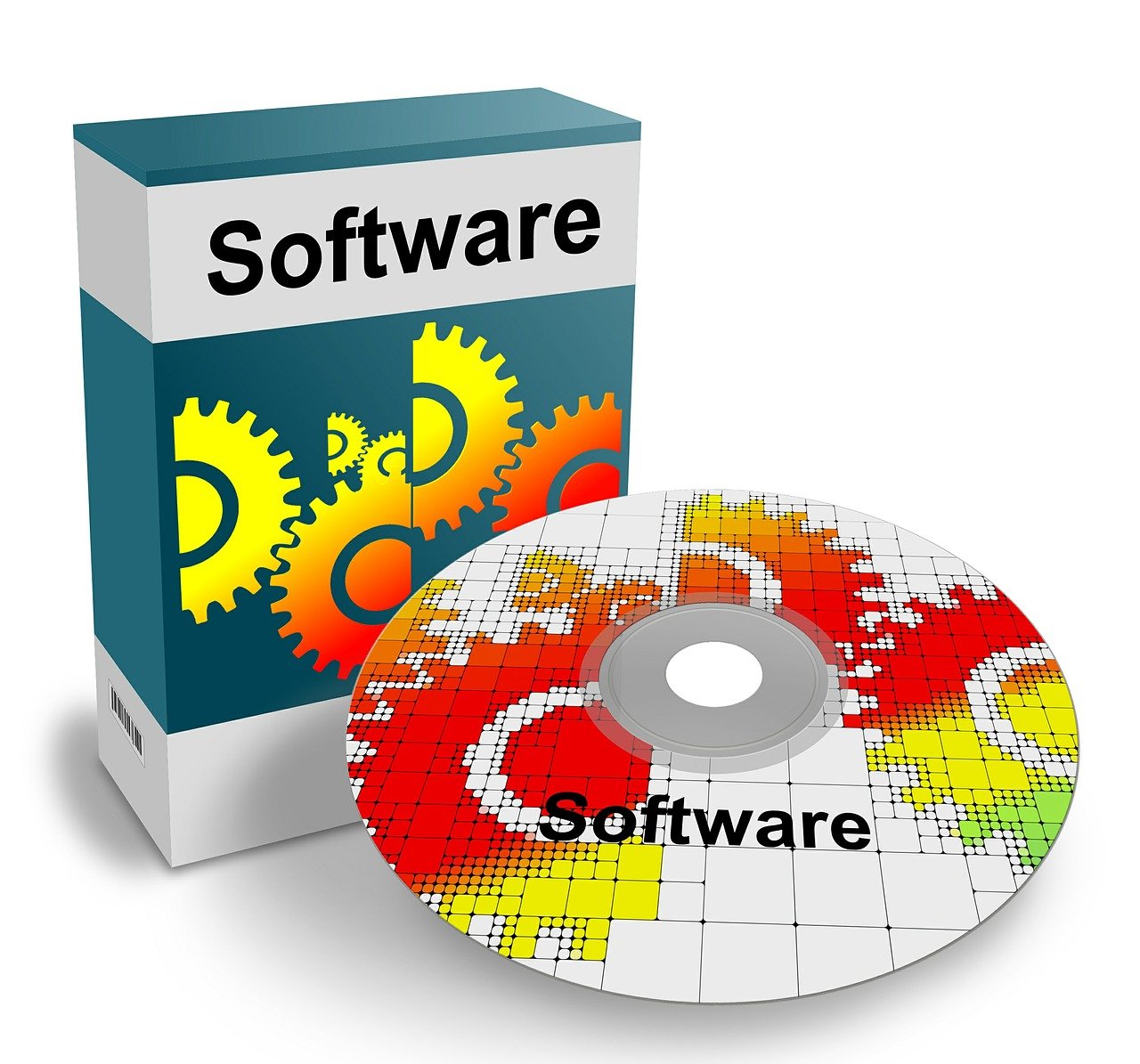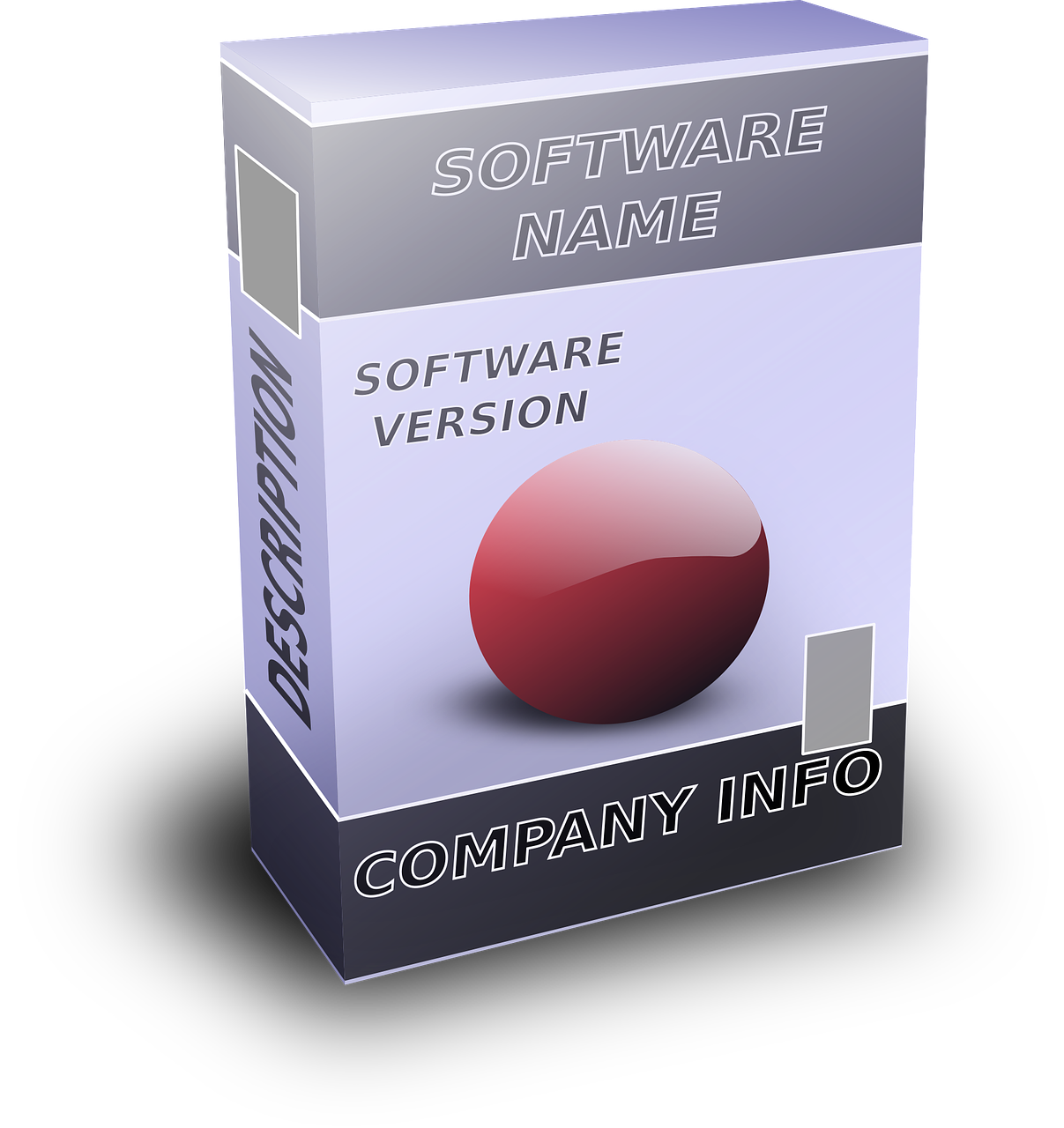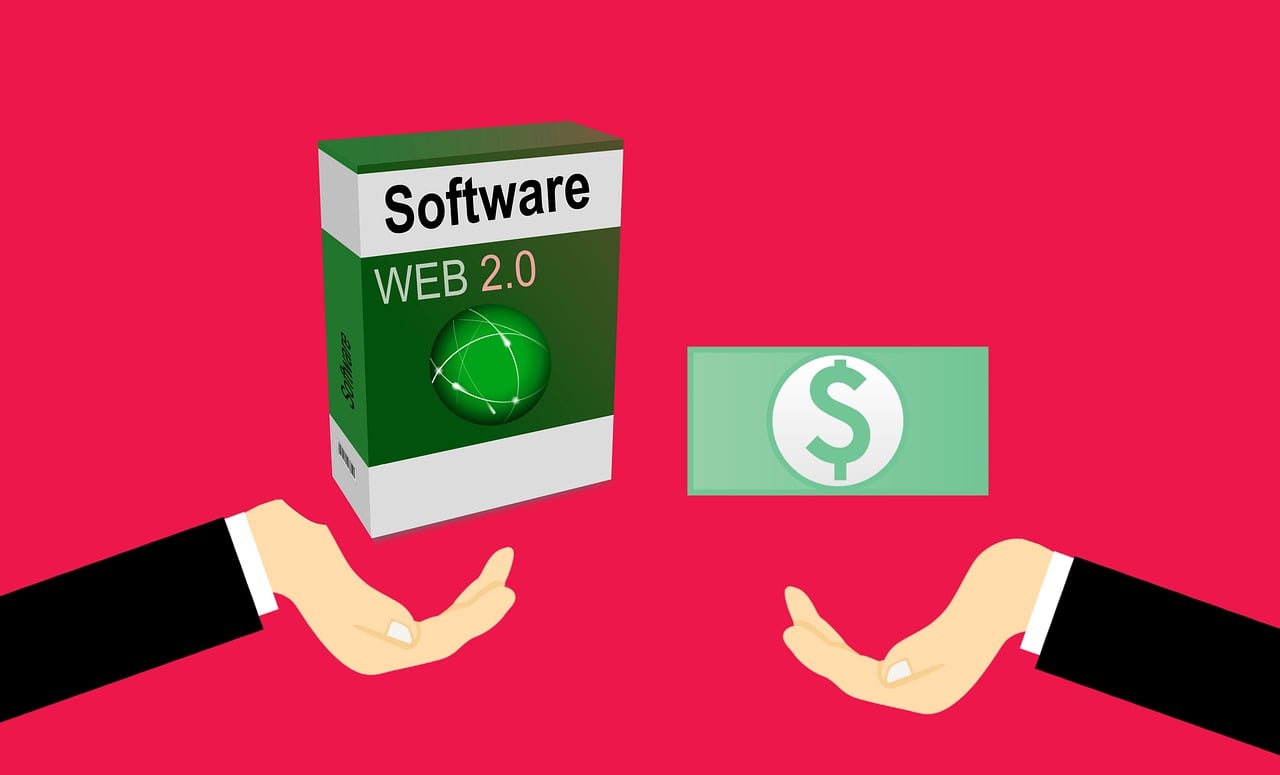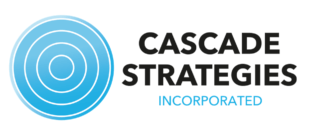Showing posts tagged with: tech companies
07
Feb

Paradigm Shift
We’ve recently written about recent AI advancements and popularity, particularly generative AI like that of ChatGPT, driving renewed demand for data centers not seen in decades. This surging demand pushed tech investors to put $39.6 billion into data center development in 2024, which is 12 times the amount invested back in 2016.
A recent development, however, has stirred things up, especially the concept that billions of dollars needed to be spent for AI advancement. Developed by a Chinese AI research lab, an open-source large language model named DeepSeek was released and performed on par with OpenAI, but it reportedly operates for just a fraction of the cost of Western AI models. OpenAI, however, is investigating if DeepSeek utilized distillation of the former’s AI models to develop their systems.

Copyright: cottonbro studio
What Is “Distillation?”
According to Labelbox, model distillation (or knowledge distillation) is a machine learning technique involving the transfer of knowledge from a large model to a smaller one. Distillation bridges the gap between computational demand and the cost for training large models while maintaining performance. Basically, the large model learns from an enormous amount of raw data for a number of months and a huge sum of money typically in a training lab, then passes on that knowledge to its smaller counterpart primed for real-world application and production for less time and money.
Distillation has been around for some time and has been used by AI developers, but not to the same degree of success as DeepSeek. The Chinese AI developer had said that aside from their own models, they also distilled from open-source AIs released by Meta Platforms and Alibaba.
However, the terms of service for OpenAI prohibits the use of its models for developing competing applications. While OpenAI had banned suspected accounts for distillation during its investigation, US President Donald Trump’s AI czar David Sacks had called out DeepSeek for distilling from OpenAI models. Sacks added that US AI companies should take measures to protect their models or make it difficult for their models to be distilled.

Copyright: Darlene Anderson
How Does Distillation Affect AI Investments?
On the back of DeepSeek’s success, distillation might give tech giants cause to reexamine their business models and investors to question the amount of dollars they put into AI advancements. Is it worth it to be a pioneer or industry leader when the same efforts can be replicated by smaller rivals at less cost? Can an advantage still exist for tech companies that ask for huge investments to blaze a trail when others are too quick to follow and build upon the leader’s achievements?
A recent Wall Street Journal article notes that tech executives expect distillation to produce more high-quality models. The same article mentions Anthropic CEO Dario Amodei blogging that DeepSeek’s R1 model “is not a unique breakthrough or something that fundamentally changes the economics” of advanced AI systems. This is an expected development as the costs for AI operations continue to fall and models move towards being more open-source.
Perhaps that’s where the advantage for tech leaders and investors lies: the opportunity to break new ground and the understanding that you’re seeking answers from unexplored spaces while the rest limit themselves and reiterate within the same technological confines. Established tech giants continue to enjoy the prestige of their AI models being more widely used in Silicon Valley — despite DeepSeek’s economical advantage — and the expectation of being the first to bring new advancements and developments to the digital world.
And maybe, just maybe, in that space between the pursuit of new AI breakthroughs and lower-cost AI models lie solutions to help meet the increasing demand for data centers and computing power.

Copyright: panumas nikhomkhai
Featured Image Copyright: Matheus Bertelli
Top Image Copyright: Airam Dato-on
Read more
28
Jan

The Demand For Data Centers
Do you know how much energy a ChatGPT query consumes? If you use a traditional Google search to find the answer, that particular Google search would use about 0.0003 kWh of energy, which is enough power to light up a 60-watt light bulb for 17 seconds. A ChatGPT query (or even Google’s own AI-powered search) consumes an estimated 2.9 Wh of energy, which is ten times the energy used by a traditional Google search. Multiply the energy consumed by 200 million ChatGPT daily queries by a year and you have enough power for approximately 21,602 U.S. homes annually or to run an entire country like Finland or Belgium for a day.
No surprise then that AI’s growing mainstream popularity and usage have led to an increase in data center demand. For years, data centers were able to maintain a stable amount of power consumption despite their workloads being tripled, thanks to efficient use of the power they consume. However, that efficiency is now challenged by the AI revolution, with Goldman Sachs Research estimating data center power demand growing 160% by 2030.
McKinsey & Company noted in a September 2024 report that data centers consume 3% to 4% of total US power demand today, while Goldman Sachs puts worldwide use at 1% to 2% of overall power. By the end of the decade, data centers could be seen accounting for 12% of total US power and 3% to 4% of overall global energy. This level of demand spurred investors to push $39.6 billion into data center development and related assets in 2024, which is 12 times the amount spent in 2016.

Copyright: panumas nikhomkhai
How All That Power Is Used by AI
What were once warehouse facilities hosting servers mostly found in industrial parks or remote areas, data centers have now progressed into vital institutions in the digital world we’re living in today. The “old” problem used to be that the traditional data centers had some space that was underutilized, while the “new” problem is that space is scarce and critically needed. This has created a surging demand for more of these structures in order to address AI’s accelerating demand for more computing power.
As illustrated earlier, AI workloads consume more power than traditional counterparts like cloud service providers. Out of the two primary AI operations, “training” requires more computing power to build and expand models over time. However, the operation that derives responses from existing models called “inferencing” is growing quickly in volume as AI-powered applications become more popular and widely adopted according to a Moody’s Rating report. Their report further predicts inferencing growth over the next five years to make up a majority of AI workloads.
Amazon, Google, Microsoft, and Meta have stepped up to satisfy the demand by building, leasing and developing plans for hyperscale data centers. Moreover, investors have demonstrated a pronounced prioritization of AI projects over traditional IT investments; in fact, an Axios article noted that “tech leaders are actually worrying about spending too little.”

Copyright: Brett Sayles
Chokepoints in the AI Boom
It’s not only power that tech companies and developers have to consider when addressing the demand for new data centers; their location and access to that power are challenging their progress and development. Data centers may consume up to 4% of US power today, but because they are clustered in certain major markets they pose a substantial stress to local resources. McKinsey & Company’s September 2024 report also noted that there is at least a three-year wait time for new data centers to tap into the power grid of a major market like Northern Virginia. The search for available space, power and tax incentives have led developers to look into other markets like Dallas or Atlanta, according to a Pitchbook article.
Unlike investors, some local governments are not as keen on the development of data centers and may pause contracts or prioritize granting access to their power grid to other projects. An October report by the Washington Post revealed that a number of small towns have strongly pushed back against the construction of data centers in their areas.
In addition to concerns from residents over the strain data centers would put on local resources, carbon dioxide emissions can’t be overlooked, as Goldman Sachs estimates that such emissions will more than double by 2030. Areas with rising energy consumption from data centers might therefore find it challenging to meet climate targets.
Accelerated data center equipment demands are also straining the supply chain, as orders are taking years to fulfill. Planned tariff increases could also stress the delivery of offshore-produced parts and components used by data centers.

Copyright: panumas nikhomkhai
Navigating Towards The Future
While it is exciting to witness AI’s mainstream adoption and technological advancements, the challenges brought forth by its explosive demand for data centers could be just as intimidating. Perhaps Forbes expressed best how we should navigate this period of growth and uncertainty: we need to plan with purpose, not panic. We need to build with responsibility, not exuberance.
While the AI boom granted us the opportunity to correct the oversupply of demand centers resulting from the dot-com boom, we need to tread more carefully when addressing this new need for more of these infrastructures. We need to understand what each data center is being planned and built for, its primary purpose, and how it connects to local resources. Yes, we were able to breathe new life into data centers that were underutilized after the Internet boom, but that took years and a new technological revolution to correct. Who knows if we’re also able to enjoy the same chance to recover if we fumble today’s attempts to address the demand for data centers? For all we know, the next technological wave might such be a swerve that it advances beyond the need for data centers.
We should also improve, innovate or discover new renewable and responsible energy solutions as well as increase the efficiency of our developing technologies’ use of power. There’s also an opportunity for the tech industry to enter into dialogues with local audiences about what is happening in the digital world and what they can expect from AI, thus demonstrating transparency and social responsibility.
As investors and developers eagerly meet AI’s surging demand for data centers, perhaps we can pause and appreciate this opportunity to make decisions that not only fortify the connection between the digital space and the world we live in today, but also forge a more responsible and sustainable path towards the future.

Copyright: TheDigitalArtist
The Impact of DeepSeek
While the tech industry searches for solutions to the data center demand, a new player has emerged to shake things up: Chinese AI research lab DeepSeek has released their open-source large language model. Quickly shooting to the top of Apple Store’s downloads, DeepSeek has challenged contemporary views on AI development with a platform that performs just as powerfully and efficiently as OpenAI while reportedly operating at a fraction of its Western counterparts’ cost. While it feels like we’re on the brink of a paradigm shift, we believe its true impact is yet to be seen. We expect to know and learn more in the coming weeks, and we’ll share our thoughts in a future blog.

Copyright: Yanu_jay
Featured Image Copyright: franganillo
Top Image Copyright: Yamu_Jay
Read more
30
Apr

Market research has proven itself to be an indispensable and critical tool in helping companies identify their audiences and achieve their marketing goals. As with any tech company, market research groups can come from small or large firms. You might be inclined to go with a larger market research firm because of the common adage “Bigger is better,” but you just might be surprised by what a smaller market research group can accomplish for you and your big tech company.
What makes smaller market research firms different from their larger counterparts? What are the advantages of working with a small market research group? Off the top of your head, you might think that cost-effectiveness is the main reason. But it goes well beyond that. Here are three good reasons why partnering with a small market research firm benefits your big tech company:

Copyright: geralt
One Team from Start to Finish
From the initial sales meeting to the project’s conclusion and implementation of recommendations, you’ll be interacting with the same team throughout. With a larger company, you might need to work with different teams for every phase of the project, and you might find yourself having to repeat yourself now and then, especially with the nuances of what you want or what the project needs. There’s also a risk that certain details and preferences might be overlooked or don’t get passed on as you switch from one team to another as you move through the phases.
Not only is there a seamless transition between stages of the projects with one team, but Cascade Strategies also employs veterans of the industry who bring to the table a potent combination of well-rounded skillsets and experience. Not only are they able to effectively understand your preferences and ideas no matter which phase of the project you’re in, but they also can oversee and recognize the effects of those concepts in the grand scheme of things or when they would come into play.

Copyright: ar130405
Better Communication and Responsiveness
With a smaller but experienced team, communication lines are much more open with members empowered to act or resolve issues when the opportunity arises. A project might encounter delays with a larger firm of multiple teams due to miscommunication (“I wasn’t informed”) or hindrances resulting from the division and distribution of roles and responsibilities (“Not my job”). Thus, a smaller team might also be more available and receptive when it comes to assisting a client whenever they raise a question or concern.
One team alone holding a meeting might slow down the overall progress of others working on the project, so just think of the impact if multiple groups need to take time off for discussions and calibrations. The time multiple teams take for meetings can be time used by a smaller team for revisiting ideas and scenarios until a “breakthrough” is achieved.
You might also find a smaller team is more invested in the project, hence the clearer communication and quicker responses. Multiple teams might be handicapped with multiple projects going on at the same time and the need to meet deadlines. A smaller team might handle more than one case study at once, but given that they’re overseeing the whole thing from start to finish, there exists a passion to get everything done right, and seeing the client and team’s visions come true no matter how big or small a project is.

Copyright: geralt
Culture
Speaking of passion, you might find a smaller market research firm having a more “can do” attitude and approach to your project. Not only that but at Cascade Strategies, we continually push the limits of what can be done and achieved with a project to reach that “breakthrough” that you might not have otherwise found had you gone with a different market research firm. A larger market research company on the other hand might be hustling to come up with conventional or simplistic ideas for you just to meet deadlines and deliverables.

Copyright: Kindel Media
Big Tech Company Case History
Take for example an academic software transformation project Cascade Strategies completed for a large global producer of industrial software. We conducted depth interviews with worldwide universities to develop a working hypothesis that would help formulate an implementation roadmap. We recruited academic decision-makers as respondents from a list provided by the project’s Software as a Service (SaaS) project director and supplemented by our panel. The interviews lasted roughly 45 minutes, with four in each of 16 countries for a total of 64 in-person depth interviews.
The study resulted in a working hypothesis with not one, not two, but three important premises, chief of which revealed that the respondents can be divided into the following two groups: the Elite and the Rank & File. The former are respondents from universities with a sophisticated preference towards the software provided to the students and typically have greater-than-average resources as well as uniform policies regarding software acquisition. The latter came from academic institutions demonstrating a pragmatic and single-task-focused approach to providing software to the students, and they often don’t have the full resources or uniform policies for software acquisition.
The second premise was that industry partnerships create pressure for constant advancement and higher sophistication of the software used for teaching, especially in the pursuit of true industrial replication. The third premise was that the pace of change is overwhelming for the Rank & File — too much for them to manage without guidance and assistance from the industry itself. Software makers who showed themselves willing to support academic institutions in this way we called “Industry Guides.”
Based on these three premises, our working hypothesis was that the software providers should clearly and publicly demonstrate equal concern for the Elite and the Rank & File when it comes to SaaS products and programs. This can be achieved with the re-introduction of product tiers, offering rudimentary beginner-level products such as simple tutorials and help functions as part of efforts to nurture at a basic level and push for industry partnerships, helping drive the Rank and File towards gradual sophistication in the software they use for teaching. Additional research into the needs and wants of the Rank & File could also lead to the creation of broad-based communications programs as well as specific single-university special programs aligned with these efforts.
This case history is one of many examples showing how our market research firm has consistently helped big tech companies for over three decades. From dramatically increased sales to award-winning marketing campaigns, we help big tech companies accomplish their goals and resonate with their target audiences with the valuable and actionable insights produced by the high-level and quality market research we provide. It’s not only our passion but also the high level of human intelligence and imagination we apply that adds a deeper value to the insights we derive for your project outcome.
If you would like your brand to break past ordinary bounds and achieve true excellence in its next campaign, contact Cascade Strategies today and find out how we can help you.
Read more
26
Mar

Software Marketing Today
If you look all over the Internet, you’ll find a multitude of articles talking about the most effective strategies for marketing your software development company. Ranging from seven to fifteen different strategies, these articles feature proven techniques like email marketing, social media or content marketing, pay-per-click (PPC) advertising or paid ads, and the like. For our part, we boiled it down to five key strategies here.
But with how tough competition is in the software development industry, it won’t be any surprise if the thought of doing more regarding targeting new customers has crossed your mind. Most likely, software companies are using the same marketing strategies you’ll find online, so employing a different tactic would help your company stand out from the rest or dominate a particular niche. But how do you come up with a different game plan when the field of software marketing has apparently been mapped out with all that strategic information available out there?
Most software marketing strategies focus on targeting and resonating with the ideal customer, from identifying the most profit-optimal client to tailoring your messaging to appeal to that buyer persona. They talk about the variety of approaches you can take to capture the attention and engage with your target consumer. But what if aside from thinking about who your ideal customer is, you take your marketing one step further by coming up with the best possible user experience, from the time your target persona first hears about your company to the point that they’re not only your regular customer but also your company’s best advocate?

Copyright Karolina Grabowska
Focusing On the Customer Experience
Now you might be thinking that this either sounds like the same thing or even antithetical to the concept of optimizing your marketing efforts by recognizing your ideal customer. You will still be doing the same things you’ve done in identifying and reaching out to your target client, such as demographics, psychographics, even SEO, but with this approach you are not just looking outwards from the lens of company marketing but rather from the perspective of a customer looking for a solution to their problem.
With that thought, you start off with the question of “exactly what problem was my software meant to solve and how does it solve it?” Are you able to deliver that idea in words that are easily understood by your ideal customer? Are you targeting the end-user or is there a decision-maker involved? If there are other similar companies offering the same product, how do you set yourself apart with what you can do differently from the vantage point of a prospective client? Can you encapsulate all that if all you have is one tagline or even one image to catch consumer attention? If it does catch attention, what would hook your best prospect into learning more about the software? As you can tell, some if not most of these questions also serve as a good foundation for the branding of your software product.

Copyright Fauxels (Pexels)
Local Presence Focus
You can also consider looking locally to see if the solution your software is offering is relevant to your community. If everything falls into place, not only will you enjoy the benefit of a consumer base right at home but more often than not, local communities have proven to strongly appreciate and support homegrown talent. This in turn could lead to an optimized and visible Google Business profile in search results and Google Maps. Just imagine how a local consumer feels discovering that a company offering a solution to their problem is found right in their own neighborhood.
Digital marketing is all the rage nowadays but exploring your local market also opens up the opportunity to try traditional marketing such as flyers and mailers. You can also even try hosting events or partnering with local companies, which would be a good way to practice and gain experience especially if you have plans to expand further not long after and would consider similar marketing activities and collaborations like influencer marketing and guest blogging.
Focusing locally is also a good place to start with SEO. Backed by keyword tools and planners to generate long-tail keywords, approaching SEO with the mindset of a local consumer with a specific objective in mind allows you to experiment more efficiently with a narrowed set of key phrases compared to what you had to work with had you jumped into a larger market base. Once you figure out the keywords that work best from your localized set, you can then riff off from these examples as you start expanding beyond your community.

Copyright MR-PANDA
Website Optimization and Multimedia Content
You can then optimize your website and its content with those keywords. Design your website with the added perspective of a customer visiting for the first time: navigating it should be intuitive with an engaging interface and interesting content. Make sure it’s mobile-friendly as well. If you don’t know it yet, search engines favor fast loading websites so regularly test your site speed especially whenever you make any changes or updates. Your Google Business profile might capture would-be clients’ attention, but it’s at your website where most of the action should take place, so be sure you have plenty of quality backlinks to it.
Whether your website is found through search results or a backlink, your first-time visitor would be expecting to find content elaborating on why your software is the right product for them. Aside from a blog section and other written elements, make sure to devote some space for informative multimedia materials like video tutorials or walkthroughs. Your written content can have all the information you would like to relay about your software and your company, but your visitor might not have all the time in the world to go through all those. Instead, they might stick around for a short but engaging and entertaining video.
Incorporate short animated infographics or explainers too into your website, thus sharing information about your software and your company. Vary your videos and animated graphics between informative and technical to fun and entertaining. This is also an opportunity to make your software stand out from other similar products or for your branding to express its uniqueness. You may also use the same multimedia content for your video or email marketing so there’s a sense of familiarity when your customer lands on your website for the first time.
Speaking of familiarity, you might also engage with your customer even more by providing free trial/limited time offers and Freemium subscriptions right from your website. These allow your customer to enjoy the basic features of your software and truly get a feel for what your product offers, perhaps leading them to opt for a Premium or higher-tier subscription for additional or complete access. If possible, you can offer a certain feature of your software to be available on your website; for example, a photo editor whose output could be downloadable either in a reduced but acceptable quality or with a watermark.
Making free trial/limited time offers and Freemium subscriptions available on your website also helps better position the pricing information of your software. Sure, you can include a pricing comparison chart between your software and its competitors, but firsthand experience of your product could prove to be the more convincing or deciding factor for your customer. Nevertheless, ensure that you are clear and transparent with the pricing for your software.

Copyright Andrea Piacquadio
Testimonials and Case Studies
A tutorial or explainer video would give your customer the information they need to understand how to use your software, but it might resonate better with them to use a video to tell the story behind the origins of your product. Sure, your technical videos would spell out what problem your software is solving, but they won’t be able to tap into connections of relatability that might be achieved by a video with a compelling story on how you came up with your product. Trust and loyalty can be earned by a product and company that consistently deliver what they promised, but you can add another layer to that connection by becoming relatable and personal to your customer.
That brings us to client testimonials. Depending on their length or how they are delivered, testimonials can be a once-over or your customer will be able to find one or two with similar experiences advocating the effectiveness of your software. Written testimonials are fine and the norm, but you might consider having a few published in video format. Depending on your research, you might even be able to use your video testimonials in your outbound marketing.
And they don’t all have to be too straight or technical; an effervescent and witty one-liner from a supporter that drew a chuckle from you might have the same effect on visitors to your website and lighten things up.
If applicable, case studies can be employed for the combined effect of walkthroughs and testimonials. While it’s usually delivered from the technical perspective of the company, it would pander to a tech-savvy customer who is looking for a more in-depth or niche look at how your software can be applied. Bonus points too if the client using the software in the case study is well-known and well-respected. But don’t let all that technical stuff limit you to jargon and technobabble; consider using language that’s less robotic or monotone and more conversational and organic, taking the opportunity whenever possible to explain or simplify certain techspeak terms or to translate highly specialized situations into simple, relatable language.
Client success stories can also function as a case study or be as concise as a testimonial. In addition, you can also utilize or embed webinar recordings in your website. The goal of these elements in your website is to demonstrate to your would-be customers that their trust and confidence would be well-placed in both your software and your company.

Copyright Fauxels (Pexels)
Online and Offline Community Marketing
Don’t just limit that trust and confidence to the confines of your website, but expand it to the greater community out there. You’ve developed your blogs, guides/tutorials, multimedia, case studies and other materials on your website with the mindset of not only being informative and instructional, but also engaging at the same time, so the same content should work just as well on social media and the like.
Yes, you are promoting your software and company on social media but instead of being overly promotional, provide value to your target audience by directing your content toward addressing common pain points and questions. This way, you establish yourself as a thought leader while connecting with your audience at the same time.
Don’t overload your posts with information, though; you can use the “breadcrumb” approach where you open with a particular pain point and lightly touch on what your software can do to solve it and then add a backlink to your website if they would like to learn more. Aside from sharing a whole video or webinar, you can also lift a particularly interesting section from it to share on social media along with a link where they can watch the full content. Break the monotony every now and then by sharing funny or witty content that’s either relevant to your software or industry as well as a particular occasion or holiday.
Be mindful of the audience and the platform you’re sharing your content with as well; your entertaining and engaging videos would connect well with the Facebook or Twitter crowd, but the more technical stuff such as case studies and webinars might be better received by industry experts, potential professional connections and decision-makers on LinkedIn.
Just as you would engage with your audience, potential and existing customers and their questions and concerns on your social media accounts, you might as well do the same at the forum threads of Quora, Reddit, and other online communities to help build brand awareness and your industry expert reputation.
Knowing or understanding your target audience and the platform would also help lead to tapping into influencer marketing, as you observe the most relevant online personalities drawing the most engagement with likes, reactions, shares, retweets, shoutouts, and more. The same can be applied for other companies you can consider partnering with or guest blogging for, as well as other products you can integrate with, allowing you to connect to new customer bases you wouldn’t have otherwise reached. Of course, you would still need to carefully evaluate the pros and any cons of partnering with a particular influencer, company or product.
In addition to a strong online presence, there’s a larger offline community that you shouldn’t forget to connect with as well. Make your presence felt in the real-world by customers, decision-makers, and other field professionals by attending industry events, hosting live demos, participating in local community events or if possible, sponsorship programs.
And what could also be more real to a would-be customer than someone they know who not only uses your product but has good things to say about it? Most marketing strategies focus on new customer acquisition, but it’s been proven time and time again that it’s much more cost-effective to retain an existing client versus acquiring a new one. A key point to keep in mind is to treat an existing client like a new customer by also extending to them special offers from time to time like free trials, limited time promotions, or exclusive first access to new or upcoming features. This sense of exclusivity can help counter feelings and thoughts that only the new customers are getting the better deals. The current customers have, in fact, rightfully earned the privileges of loyalty. Imagine how much more powerful and transformative it is to have positive word-of-mouth generated by a long-time customer advocating in your behalf, thanks to this sense of exclusivity and belonging they feel.

Copyright geralt (Pixabay)
Like we’ve noted earlier, optimizing the user experience from prospect to advocate based on the perspective of your customer goes hand-in-hand with the conventional software marketing approach of identifying and targeting your ideal consumer. It might be a novel approach to you, or you already have a lot on your plate with the myriad of software marketing strategies available, but you just couldn’t dare leave any stone unturned; worry not, as you can rely on one market research company who has been performing highly innovative and consistent marketing research work for thirty years and counting.
With a variety of services, Cascade Strategies has been conducting, adapting, and innovating market research studies for over three decades for an honor roll of respected clients. In addition to incorporating ground-breaking methodologies, Cascade Strategies also takes full advantage of the high level of professional research experience and imagination our staff brings to the table to uncover breakthroughs leading to the best marketing solutions for your company. Contact Cascade Strategies today to learn how we can help your software development company do a better job of targeting new customers.
Read more
19
Jul
According to Investopedia, only 80% of startups survived after one year, with reasons for failure ranging from money running out, being in the wrong market, lack of research, bad partnerships, ineffective marketing, and not being an expert in the industry. As a counterpoint, they cite activities such as setting goals, accurate research, loving the work, and not quitting as ways a small business can avoid failing.

Is it really that simple? Maybe not, but here at Cascade Strategies we believe it’s at least reducible to a clear step-by-step process. Here are our ideas — 5 steps on how to market your software company effectively.
1. Identify brand, goals and what makes your company unique
The first step in marketing a software (or company in general) is to determine your strategy by identifying and building around your goals. In addition to generating revenue, are you planning to establish a niche in your market? Is it also in your plans to continually develop your software through organic user feedback? You will also need to come up with a brand that not only aligns with the goals you come up with, but also helps you stand out from the competition. With thousands of software companies in the market, you’ll need to highlight what makes your software unique and what new or different property you bring to the table. A clear identity not only makes your brand more recognizable, but also makes it more strongly connected to the values you represent, leading to the formation and promotion of your reputation.
2. Identify target audience, especially the decision maker
Part of a marketing strategy is recognizing not only who you should be selling to but also who will most likely convert to a loyal customer. Through demographics, psychographics and segmentation, you’ll be able to form or identify your ideal customer and thus focus your marketing efforts on this particular client type. However, it works a little differently with Software as a Service (SaaS), since you will often need to appeal to a specific decision maker at a company (i.e., a specific title) who will have the strongest hand in choosing your particular software over competitors. You can confront this problem by not only flaunting what your software does best but also extolling the benefits it brings to the workplace in terms of productivity and efficiency.
3. Create a strong online presence (website, social media, SEO, email marketing, influencer marketing, video marketing)
As a software company, it’s vital that online marketing be part of your strategy. You can utilize traditional marketing, but online marketing offers more advantages when it comes to product promotion and customer engagement. For starters, it’s more cost effective and gets faster results. Webfx.com goes into detail regarding the advantages online or digital marketing possesses over traditional channels here.
Your website will need to be optimized for both SEO (so you rank in search pages) and function (so you effectively represent the quality of your brand). A slow or glitchy software company website won’t bode well for the performance of the product you’re selling. Keep your websites and social media pages up-to-date and active as much as possible to make them welcoming and inviting for customer interaction and feedback. Try to maintain your online presence on more than one social media page. Teamdeck said it best on the importance of social media: If a company doesn’t exist on social media, it looks suspicious.
Collaborate with influencers with similar values who have a following matching your intended audience. Reputable influencers can greatly help boost product sales and trust by lending their credibility to your offering. And don’t forget coming up with relevant and appealing videos: the essential message of lengthy prose literature can be delivered just as effectively and in lesser time with a well-made video.
4. Personalize or be relatable (origin story, client success stories, face-to-face meetings, events or interactions, what common problem you want to solve and how your product solves it)
Software companies can run the risk of employing too much technical jargon in their marketing, so why not try the more personable, relatable approach? Develop a simple but well-written account of how your company started or an entertaining retelling of the original question or dilemma that you sought to resolve through the development of your software. Even better if this question or dilemma can be framed in a common or everyday situation that most people can relate to.
Client success stories are just as effective as direct customer testimonials might be in similar situations. Potential customers might be encouraged to use or continue to use your product knowing it can be instrumental in the resolution of the problems they’re facing. But these are not the only places where you can be relatable. Face-to-face meetings or events to promote your product or engage with your customers can bring your company out of any cold, impersonal impression they might otherwise have.
5. Let prospective clients experience your product (demos, Freemium, free trial/limited time offers)
And to tie into the last point, personal events also present the opportunity for demos. Just imagine all those prospects you can convert by giving them firsthand experience with your product while offering them real-time assistance with any questions or problems they might have. Live demos are one of the best ways to show off what your software does best while forming a connection to a prospective client. Of course, you’re not only limited to demos, as you can also let customers experience your product with free trial/limited time offers and Freemium subscriptions. The latter allows prospects to enjoy some basic features of your software without the time pressure of the former. This way, they’re able to get a good feel for how they can benefit from your software and perhaps edge closer to a Premium subscription to unlock more features.

Copyright Mohamed_hassan (Pixabay)
These 5 steps should help get you out the door in creating a good marketing strategy for your software company. But as pointed out by feedough.com, once people start using your software, you need to keep them engaged so they renew their subscription and recommend it to others. Maintain the relationships you form with your customers by continually following these outlined steps, making reasonable adjustments every now and then as the market and trends shift.
Some further reading:
https://www.webfx.com/industries/tech/software/
https://www.linkedin.com/pulse/7-effective-marketing-strategies-software-companies-shahmeer-khan
https://teamdeck.io/toolbox/marketing-strategy-for-a-software-house-what-should-it-include/
https://www.feedough.com/software-marketing-strategy/
https://blog.tmetric.com/7-marketing-strategies-for-software-development-companies/
Read more
02
Jun
How Well do you Understand Your Customers’ Needs?
As a Tech Company, how well do you know your customers? In most cases, identifying who has an affinity for your brand and focusing on the needs of that customer type can spell success for your products, especially the launch of your new offerings.

Sure, you might think you can have AI go over your customer database and hope it’s able to recognize customers and prospects most likely to purchase your product. However, AI shortcuts are unable to approach the intuitive and interpretive power of human thinking, let alone the kind performing at a high and excellent level.
The Story of HP Test & Measurement
The case of Hewlett Packard’s “Mentor” campaign is instructive. HP commissioned our researchers to spend quality time with worldwide HP engineers as well as engineers from other companies, learning about their daily lives – how they think, feel, and behave. The researchers stretched the intuitive, interpretive, and synthesis-building capacities of their right brains to arrive at a subtle insight that AI would have great difficulty seeing: that HP engineers showed greater qualities of “mentorship” than other engineers.
The result was a highly successful, award-winning global campaign. Conversion rates soared as HP logged higher equipment sales in virtually every world region. The campaign also produced significant financial gains for HP and won an ADDY Award for creativity.

The Squaresoft Video Games Story
We also conducted primary market research for Squaresoft Video Games to determine affinities for their products. They had been sending out about 200,000 mail pieces per month to key metros across the US. By giving us extracts of their file of purchases of similar games, we appended characteristics and modeled affinities for prospective buyers.

We called those most likely to respond “Videobrats.” The model reduced the number of markets to 4 key metros which had the highest concentration of “Videobrats,” concentrating their marketing on high-affinity households in these markets.
Our researchers spent a great deal of time with Videobrats in these markets, exploring their daily lives, discovering how they think, how they interact with others, and how they spend time with entertainment and gaming software. This hard work produced a key set of insights that could be perceived only through the intuitive and interpretive power of the human mind. It’s not something AI could touch.
The result was a campaign of extraordinary power and great marketplace success. Squaresoft reported dramatically increased sales of the two game titles in the specific geographies in question, ranging from 20% to 200%. Not only that, the “Videobrats” campaign won the KPMG Award of Merit for ROI performance and the Ernst & Young Most Effective Marketing Campaign Award.
The Lessons for Marketing in the Tech Sector
Many people conducting marketing campaigns in the tech sector believe you just need to tell people on the web what you have (e.g., software, hardware, systems), and the magic of internet targeting will take care of the rest. They’re wrong. It’s as important in tech as in any other category to tell people why they should want the software, hardware, or systems from your brand instead of another brand. That requires you to express something about what psychologically or emotionally binds your customers to your brand.
Discovering the root of these deeper connections requires more complex layers of understanding and perception than AI can provide at present. Hard-working humans driving their minds to higher levels of interpretation and synthesis can do it.
When market research is used not just as a means to an end but as a way to gain a deeper understanding, Tech Companies are able to produce outstanding results because they are able to come up with inspired and creative solutions addressing the needs of those who value their brand the most. AI is unable to unlock these sophisticated types of solutions because it’s unable to relate on an intuitive and interpretive level the same way excellent human thinking does.
If you’d like to see this kind of magic brought to life for your brand, please reach out to us here.
Read more







































